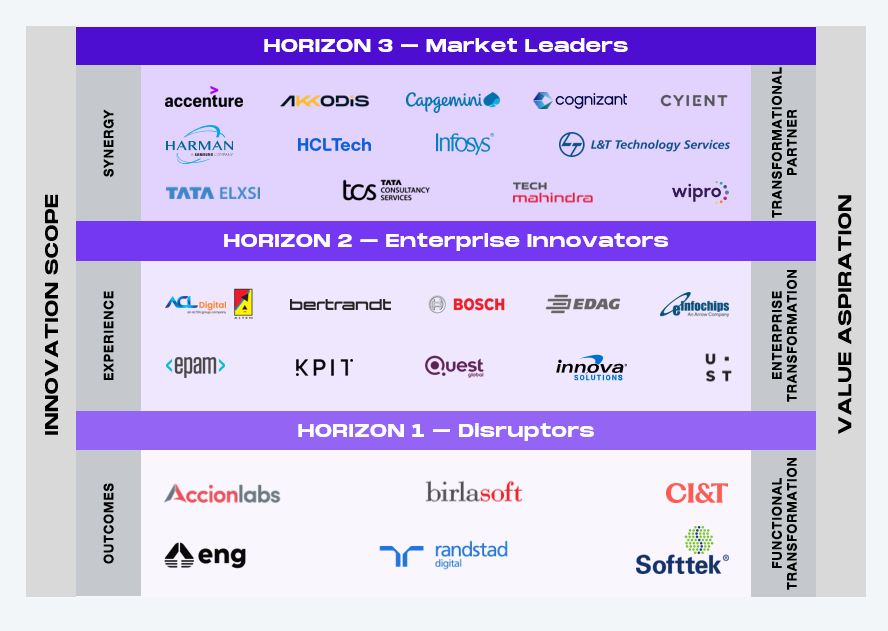Wipro’s recent $375 million acquisition of Samsung’s Harman Connected Services (HCS) is more than just a headline. For engineering and product development (ER&D) leaders, it marks a strategic shift: access to providers with broader geographic reach, stronger ecosystem linkages, and deeper product-engineering DNA.
The deal adds 5,600 engineers and deep AI, IoT, and product engineering expertise to Wipro’s arsenal, with proven delivery footprints across healthcare, industrial, hi-tech, aerospace, and automotive sectors. Beyond that, it allows enterprises to tap into Asia’s rapidly growing innovation networks and address the urgent need to build more resilient supply chains in today’s unforgiving and unpredictable climate.
For enterprises, the combination of Wipro and Harman means access to differentiated ecosystems in healthcare and analytics, with minimal overlap to disrupt existing relationships. The move also gives Harman’s engineering services a larger global platform, expanding the options for clients seeking connected, software-driven innovation.
But this is not just about adding revenue or scale. With this deal, Wipro aims to cement itself as a powerhouse in the ER&D market, signaling that engineering-led transformation will be a cornerstone of its growth strategy.
The acquisition brings Wipro four clear advantages:
This acquisition is part of a broader industry pattern: consolidation driven by leaders of the ER&D stack. Over the last five years, the largest IT and engineering providers have recognized that organic growth alone cannot keep pace with demand for software-defined, connected, and AI-powered products. Strategic acquisitions have become the accelerant (think Capgemini + Altran, Cognizant + Belcan, Accenture + umlaut, and IBM + Dialexa).
But Wipro is not playing catch-up. It is actively shaping the competitive landscape by investing in Harman’s domain expertise and Samsung-linked ecosystem advantages to cement itself as a global ER&D powerhouse. In sum, this is not just a ‘bigger Wipro.’ It is a more balanced, diversified, and ecosystem-connected firm, cementing its place on the provider leaderboard (see Exhibit 1).

Source: HFS Research, 2025
Our research shows that enterprises are no longer satisfied with transactional engineering services. They want future-ready partners to help them deliver software-defined, AI-first products and scale connected experiences across industries.
The top enterprise priorities include:
Harman strengthens Wipro’s ability to meet this agenda in three strategic ways. First, it anchors Wipro more firmly in the ecosystems that enterprises care about regarding partnerships and the deep Asia footprint. Second, it injects product-engineering DNA at scale, giving Wipro the embedded systems, IoT, and connectivity expertise to move beyond augmenting talent and toward co-creating intelligent products with clients. Finally, Harman’s global presence and sector depth make Wipro a more resilient and geographically balanced ER&D partner that delivers engineering outcomes spanning North America, Europe, and Asia without over-reliance on any single market.
Every bold acquisition comes with risks. For Wipro, three stand out:
Execution will define whether this acquisition creates long-term leadership in the ER&D services space or risks being diluted in integration. For enterprise ER&D leaders, this uncertainty reinforces the need to evaluate providers not only on their engineering scale but on how effectively they can integrate, diversify, and sustain innovation over time.
The lesson from Wipro + Harman is clear: the next phase of transformation won’t be won by scale alone. ER&D leaders must push service providers to go beyond geographic breadth and technical depth, insisting on:
The Wipro + Harman deal is a bold bet on the software-defined, AI-first future of products—cementing Wipro’s place among ER&D powerhouses and positioning it to compete head-on with global peers. For enterprises, it underscores a market shift: the most valuable service providers will be those that can co-create intelligent products, orchestrate ecosystems, and share accountability for business outcomes.
Register now for immediate access of HFS' research, data and forward looking trends.
Get StartedIf you don't have an account, Register here |
Register now for immediate access of HFS' research, data and forward looking trends.
Get Started